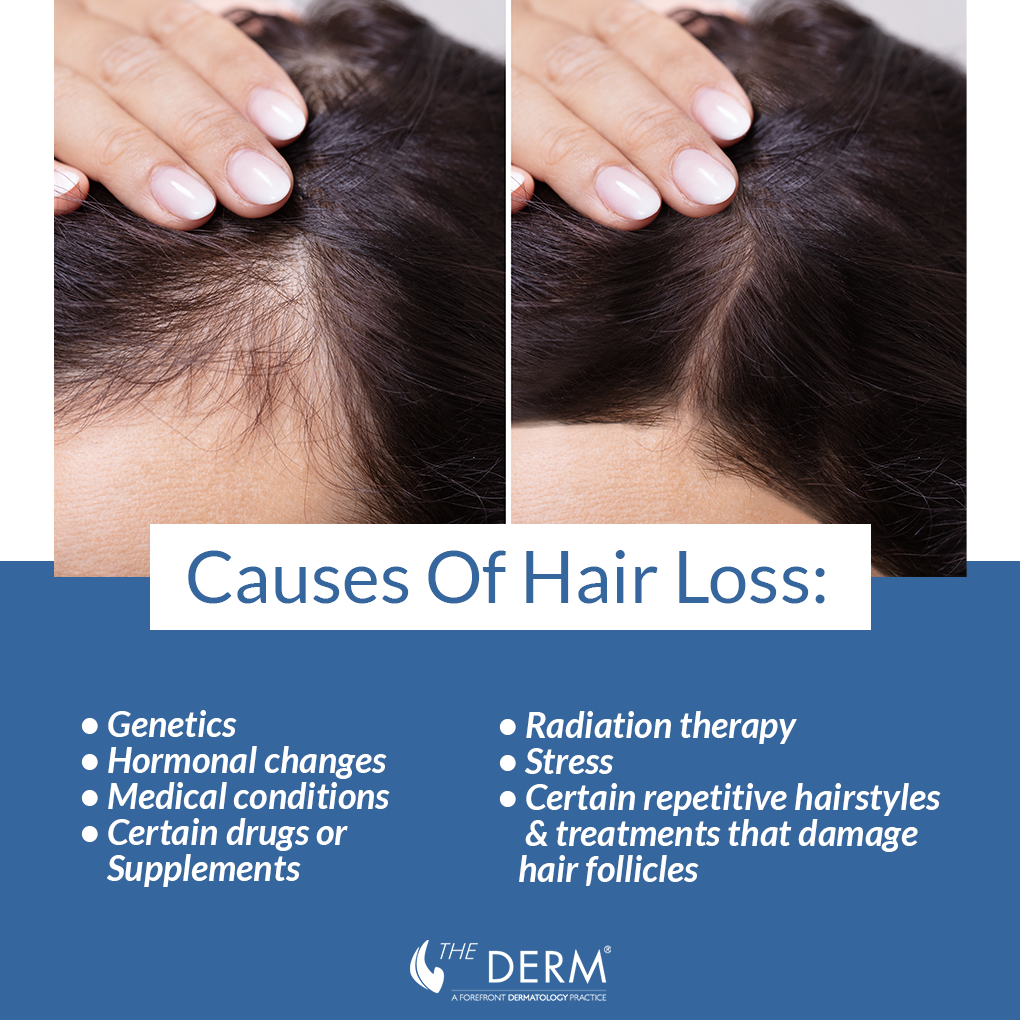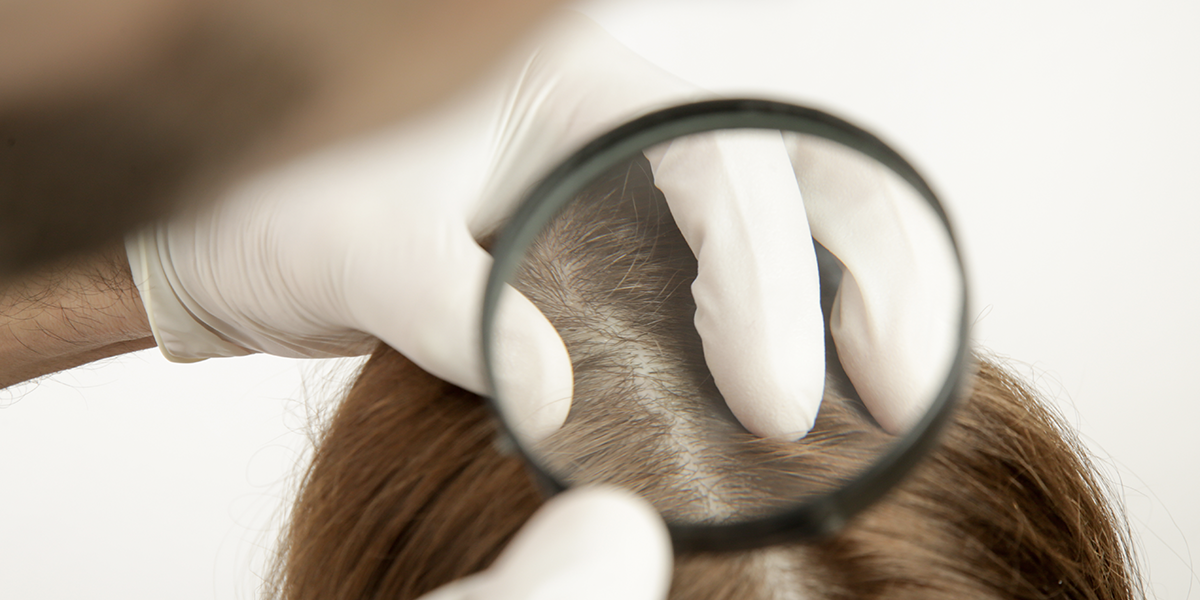One thing not many people think of when it comes to dermatology is haircare. More specifically, hair loss and hair removal.
While hair may seem like something unrelated to skin, and dermatologists are known for skincare specifically, hair grows from the skin. This is why dermatologists are actually experts when it comes to your hair as well!
Not only will dermatologists be the ones to go to when you’re struggling with hair loss and looking for a treatment, they’re also the ones to aid in hair removal techniques as well.
Here to walk us through common hair questions is our own Shannon Keiser, NP.
LASER HAIR REMOVAL
Sometimes, we want to do everything we can to keep our hair on us. Other times, hair removal is exactly what we’re looking for.
What are the benefits of laser hair removal?
“Dermatologists perform hair removal in a few different ways, with lasers being one of the best options for its various benefits. Here’s what you can expect with laser hair removal.”
It’s a long-term solution: Unlike shaving (weekly, or multiple times a week) and waxing (at least monthly), laser hair removal lasts far longer, and permanently in most cases. While some individuals may occasionally need follow up sessions months or years later, you don’t have to keep up with frequent hair loss techniques when you get your hair removed with a laser.
It’s targeted: Laser hair removal is very precise. Because of the method to remove hair (that we’ll cover below), the removal process can be very targeted, halting hair growth in certain areas while allowing it to continue flourishing in others. This is especially helpful for those looking to remove only small sections of hair growth near areas they’d like it to continue growing.
It can be done anywhere on the body: Except for eyelashes, laser hair removal can be done anywhere you want on the body. Many people opt for laser hair removal in areas that are harder to reach (or more painful) with a razor, like the bikini area and back.
It’s more cost effective long term: If you’re someone who waxes frequently, laser hair removal can actually save you money in the long-term. When you’re paying for a wax once every 4 to 6 weeks for years on end, that can add up to more than the cost of a series of laser hair removal sessions to permanently remove the hair in this area.
What is the laser hair removal process like?
The overall process for laser hair removal is simple, and effective.
First, you’ll have a consultation to determine if you and your needs are a good fit for the laser hair removal process. Then you’ll return for a session of laser hair removal.
The laser process works by emitting a specific light that the hair pigment (the melanin) absorbs. This is how the laser only impacts the hair follicle and doesn’t damage the rest of your skin (and also why laser hair removal may not be the best option for those with a specifically dark complexion or those with very light-colored hair). From here, the energy from the light is converted to heat, and this is what damages the tubes within the hair follicle that produce hair. Because of this damage, it can delay and then ultimately stop the growth of hair.
“Usually, a patient will have to go through a few sessions of laser hair removal to fully remove the hair and stop growth permanently.”
What are the results of laser hair removal?
Because everyone is unique, results will vary from person to person. Most often, patients of laser hair removal can expect the treated area to take days to weeks before the hair starts to shed. The hair usually doesn’t fall out immediately, and some can mistake this for continued growth, when in fact, the shedding process just takes time.
“The length of time this takes ultimately depends on the individual, because of the varying types of hair, density, thickness, or even the location of the treated area.”
After this time, however, you can expect a slowed and even discontinued hair growth in the treated area. Most patients do require multiple sessions for full hair removal, spaced 4 to 6 weeks apart.
HAIR LOSS
On the opposite end of the spectrum from people looking to remove hair, there are many seeking options to keep as much of their hair as possible. Let’s explore why hair loss occurs and what your treatment options are if this happens to you.
Why do some people suffer from hair loss?
The reasons for hair loss are widely misunderstood and often hard to pinpoint. That said, dermatologists are the experts when it comes to helping you solve this problem.
Here are some of the common reasons for hair loss that we know of:
- Genetics
- Hormonal changes
- Medical conditions
- Certain drugs or supplements
- Radiation therapy
- Stress
- Certain repetitive hairstyles and treatments that damage the hair follicle

“Ultimately, your dermatologist will need to understand your habits, family history, and get a sense of your everyday life to determine what may be the cause of your hair loss.”
Knowing the cause is often necessary in determining your treatment options.
What are some of the options for treating hair loss?
There have been great advancements toward hair regrowth in recent years. Where once there were only a couple hair loss options, there are more now and they work differently depending on your needs.
Here are some common hair loss treatment options.
PRP Scalp Injections: PRP stands for Platelet Rich Plasma, and is comprised of the patient’s own platelets from drawn blood. These can treat a number of things, but for hair loss, PRP can help prolong the hair’s growth phase.
Nutrafol: This is an internal solution to hair loss that targets hair loss caused by genetics, stress, or age. It’s available at The Derm, and is safe, but always consult with your dermatologist when determining if this is the best option for you.
Viviscal pro: This is another internal solution in the form of tablets that are meant to help regulate your body internally in order to quell what’s causing hair loss by sending nutrients to the hair follicles to prolong the hair growth cycle.
Rogaine (Minoxidil): Rogaine is one of the most well-known hair loss treatment options and is a topical solution. Most often, it’s used to treat male pattern baldness, but has also been successful in treating hair loss for women. This works by increasing the size of your hair follicle and extending the growth cycle of your hair, so it’s thicker and fuller.
Whether you want to remove hair or work to grow it back, seeing a dermatologist is the best first step you can take. Click here to schedule a call and work toward your hair goals today!







